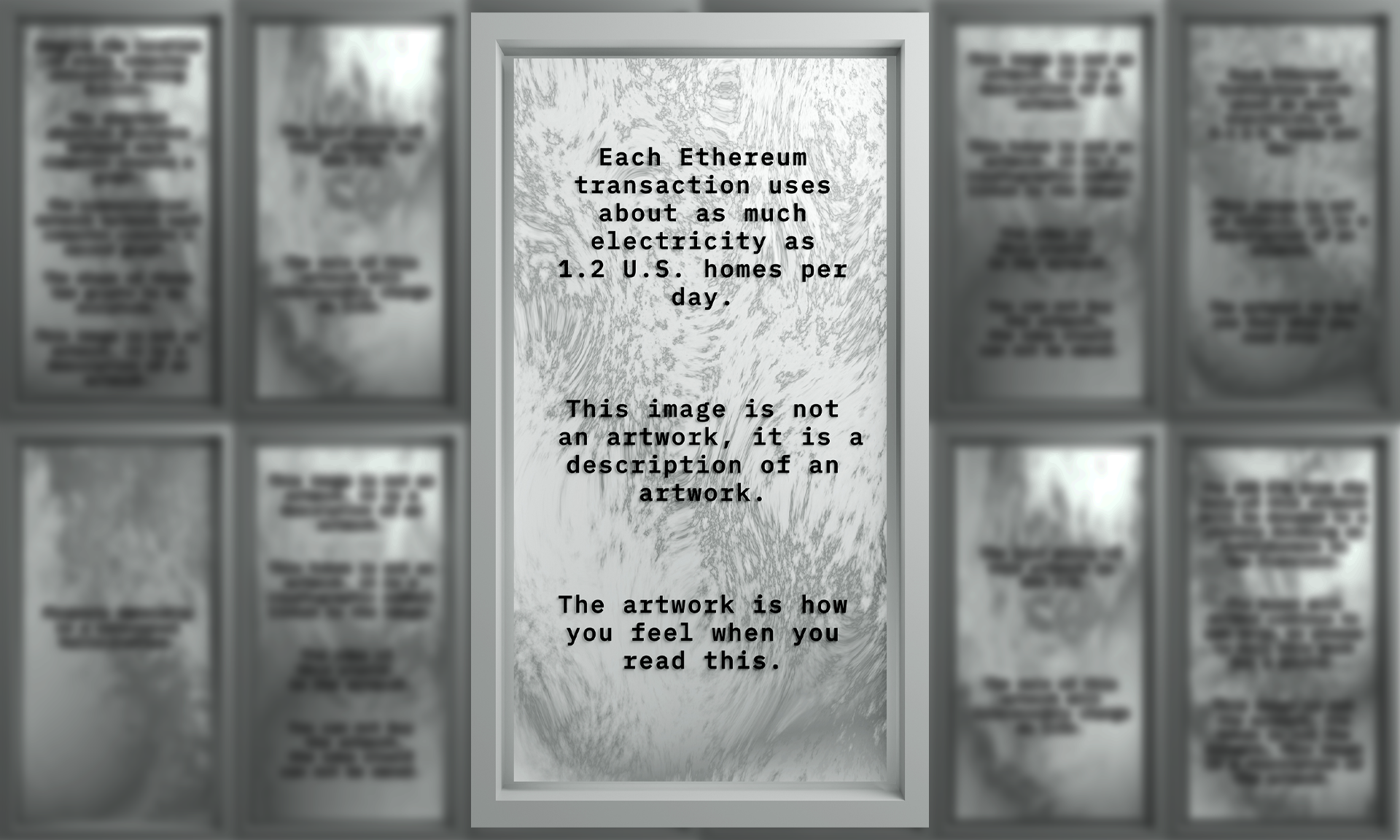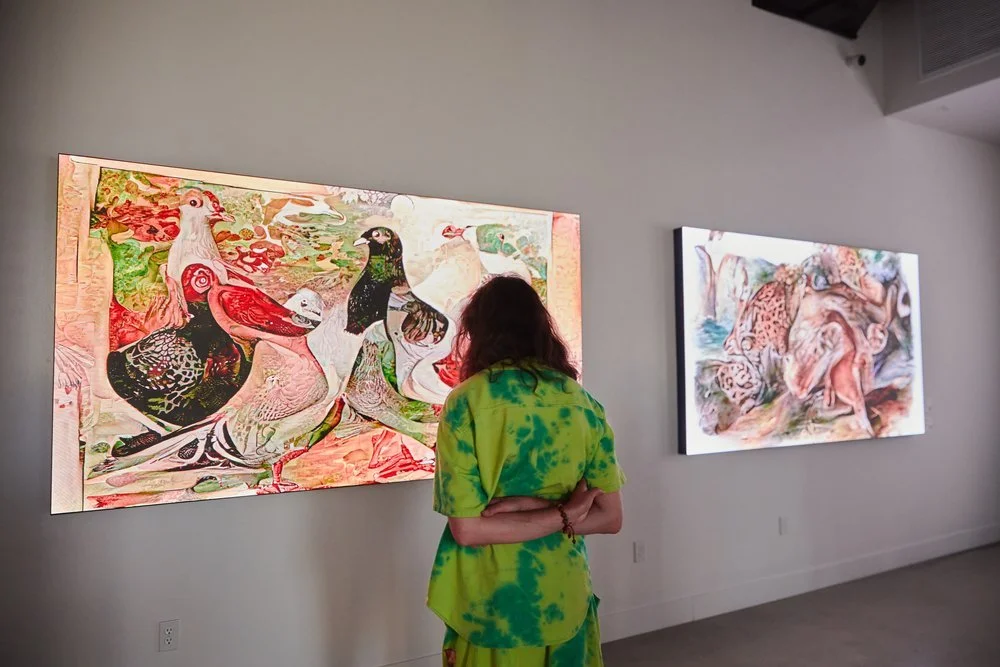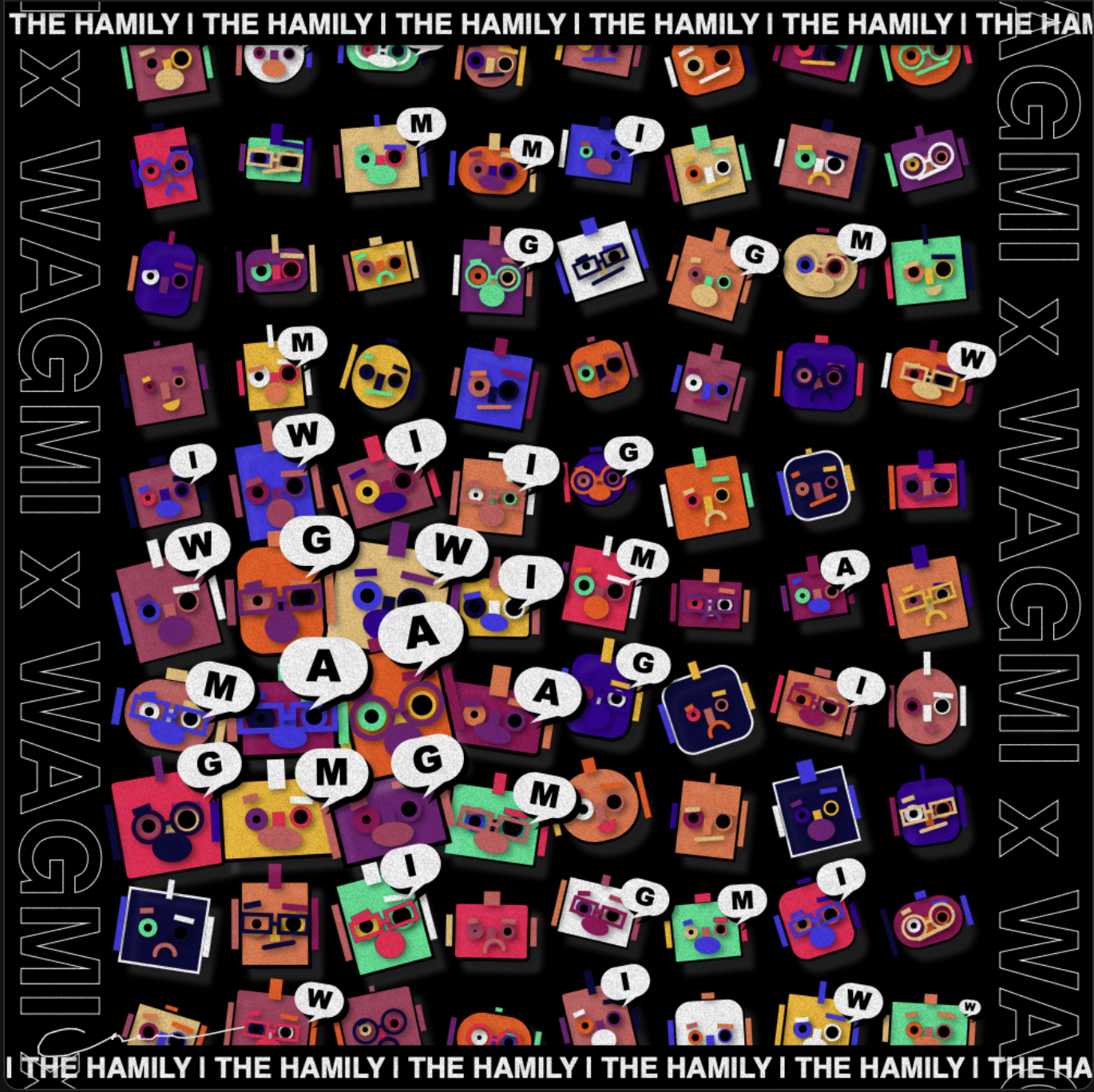NFT Concepts
NFT Concepts is a collection of seven vertically oriented images stylized as marble tablets, overlayed with black text describing various conceptual, self-aware works of art. Each image contains a short- to medium-length piece of text written in an objective manner which comments on an aspect of NFTs as a developing artistic vessel. This collection was created by Sterling Crispin in 2021, and was among the first NFTs he made and sold. Many of the images discuss the sale, purchase, or profits of the artworks themselves, while others explore the technical or societal repercussions of NFT/cryptocurrency technology.
The tablets appear as rectangular cut marble stone, each with differing wavy and spotty patterns made of grey and white. Surrounding the tablet is a less textured grey frame, shaded such that it appears to be raised from the stone it encloses. The tablets resemble precision-crafted stones intended to stand the test of time. Multiple of the tablets directly refer to Ethereum (ETH), the cryptocurrency used to buy and sell the pieces in the collection, such as the one titled How you feel.
How you feel by Sterling Crispin (https://www.sterlingcrispin.com/concept.html)
““Each Ethereum transaction uses about as much electricity as 1.2 U.S. homes per day. / This image is not an artwork, it is a description of an artwork. / The artwork is how you feel when you read this.””
The energy consumption of cryptocurrency has grown exponentially as interest and adoption of the technology has risen in the past 14 years – the Bitcoin network alone currently utilizes an estimated 154 terrawatt-hours of energy every year, more than a large number of countries. Comparatively, the ETH network consumes “only” 5.61 gigawatt-hours annually, but this has multiplied by over a factor of three since it’s inception. Many 21st century advancements involving art and digital artists, including NFT trading and generative A.I., require incredible amounts of resources to function that are hidden behind the scenes, and Crispin shines some light on these hidden costs in the collection.
The black text featured on these tablets is center-aligned, and appears in a monospaced font reminiscent of a typewriter. Monospaced typefaces provide additional visual clarity and appeal by consistently spacing characters from each other, which lines each character to a sort of grid. Fonts like this are used frequently in poetry as well as computer terminals, in both cases leading to a fluid reading experience and invoking a sense of permanence or finality.
999 by Sterling Crispin (https://www.sterlingcrispin.com/concept.html)
““The list price of this artwork is 999 ETH. / The sale of this artwork will irreversibly change my life.””
NFTs serve as a new and unprecedented way for digital artists to generate income from their art while not compromising the accessibility or format of the works. While many artists have made significant money selling their work with this technology, others have not found success due to existing issues in the art world being exacerbated by the NFT market, such as elitism and the importance of popularity. NFT Concepts, while incorporating elements of parody and satire, uses the medium to provide insightful meta-commentary on the positives and negatives of getting involved with NFTs as a digital artist.
Sources
Artsy, Avishay. 2021. “For Digital Artists, NFTs Are Promising – and Problematic.” UCLA Newsroom, April 22, 2021. https://newsroom.ucla.edu/stories/for-digital-artists-nfts-are-promising-and-problematic.
“Cambridge Blockchain Network Sustainability Index: CBECI.” 2024. Software. Cambridge Center for Alternative Finance. https://ccaf.io/cbnsi/cbeci.
Crispin, Sterling. 2021a. “NFT Concepts.” Sterling Crispin. 2021. Accessed June 6, 2024. https://www.sterlingcrispin.com/concept.html.
Crispin, Sterling [@sterlingcrispin]. 2021b. “Also, this image is really meant to be viewed on a vertical aspect ratio phone, so that you see it almost like an object on your screen. The whole series of NFT concepts I first made are like this. I wanted them to exist against the surface of your phone, not a far away place / [image].” Twitter. Accessed June 6, 2024. https://twitter.com/sterlingcrispin/status/1382837414293504002.
———. 2021c. “If you’re an artist making NFTs wondering what service you should use the answer is still ‘None of them’ / Even the ones with the best integration don’t have enough features to accurately report your taxes, even if you manually label every transaction it’ll still be wrong.” Twitter. Accessed June 6, 2024. https://twitter.com/sterlingcrispin/status/1453132701620334594.
“Energy Consumption by Country 2024.” 2024. World Population Review. 2024. Accessed June 6, 2024. https://worldpopulationreview.com/country-rankings/energy-consumption-by-country.
Friedlander, Joel. 2011. “Monospace Fonts and How to Use Them.” The Book Designer (blog). June 8, 2011. Accessed June 6, 2024. https://www.thebookdesigner.com/my-monospaced-life/.
“Monospace font pairings.” n.d. Figma. Accessed June 6, 2024. https://www.figma.com/font-types/monospace-fonts/.






